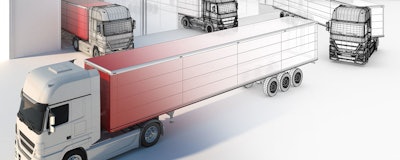
 Lou Washington
Lou WashingtonWe humans seem to love technology. I guess that is really not a surprise as technology got us out of the trees and into the subdivision. It got us off our feet and into our Fords. What sometimes gets us into trouble is our willingness to believe that technology can somehow, by itself, take care of everything.
During the mainframe era, companies like IBM, Amdahl and Hitachi built ever larger, ever faster computers. Folks would always talk about how many MIPS (Million Instructions Per Second) their box was rated at in the same way guys used to talk horsepower and hotrods at the hamburger stand.
Working for a software company, our CEO used to love to remind folks that without software, those big computers were little more than very expensive furnaces.
Today we have a similar kind of phenomenon taking place in the business world. We have tons of technology coming online to facilitate efficient business processes. CPQ, ERP, big data and analytics, Mobility, SCM and MES are just a small part of the alphabet soup of technology designed to help us automate our most critical business and manufacturing processes.
The problem is we are so infatuated with all the nifty new stuff that we sometimes forget that we still need to carefully consider, develop and manage the underlying strategies and processes that propel our enterprises forward.
Somewhat like our current day political campaigns, we rely on short bits of text to describe complex processes. We may say, “We are customer driven!” but do we mean it? What is a customer driven strategy? Can you write down five examples of how you make your enterprise more customer responsive?
Are you just doing things like, sending out satisfaction surveys and collecting net promoter scores?
If you really want to embrace a customer driven philosophy, you need to think in terms of a customer or demand driven manufacturing process. All of that technology we discussed above, will help. But, it is the process itself that allows that technology to help us flourish.
Demand Driven Manufacturing
Being Demand Driven simply means the downstream supply chain initiates activity up stream. Simply put, rather than building a product and then telling a sales rep to sell it, a manufacturer will wait until a customer places an order for something and then they will build it. It’s a pull versus push type of process.
The customer order at the end of the chain “pulls” business through the upstream layers of the supply chain. A push model works in the opposite way. Supply and part manufacturers offer pricing incentives to downstream customers to push business downstream to the ultimate end user.
Putting the end user or the demand side customer in the position to initiate activity will make you more customer focused. You can’t ignore your customer or wait until it is convenient to sell something to your customer, you have to pay attention to your customers all of the time.
The advantages of this model are clear. For customers, this model assures that they will get what they want. For manufacturers it minimizes wasted effort, supplies and finished goods. What they make has been ordered. Less inventory on either side of the production process.
The customer’s needs are more closely served and the manufacturer is producing product more efficiently.
Technology and Demand Driven
Technology should reinforce what your process improvement is trying to accomplish. So, for that reason, it is important to understand what your process goals are, what your metrics are as far as measuring effects and also how you might act on the findings you derive from the metrics you collect.
The newer technologies can have great benefit for manufacturers choosing this demand driven path. Let’s take a look at several technologies and how they support the Demand Driven strategy.
IoT – Without a doubt this is huge. Sensors deployed throughout the install base can collect and report data back to the manufacturer about how the product is used, when it fails, when it needs service and all manner of performance data related to the internal operations of the product itself.
This is huge for Demand Driven because manufacturers will be able to anticipate replacement orders, orders for consumables, part replacements, add on sales due to usage levels and other business opportunities. All of this may be possible without human conversation.
Mobility - When we think about mobility the conversation frequently gravitates toward mobility as an agent of liberation. I can do my job from my phone! There’s nothing wrong with that but how about in terms of improving your customer’s experience in the light of doing business with you.
Do you maintain customer portals? Do you have online ordering and is it mobile friendly? Can you set up pricing alerts, consumable re-order alerts or other facilities that make it easy for your customer to do business with you?
Being able to sign off on purchase order from the 7th hole is great, but enabling your customer to place an order from there is much better.
CPQ – Configuration, pricing and quoting software is tremendously beneficial to the demand driven operation. Even if you are only using it from within your sales force, you are still taking extra steps to assure to the customer is getting exactly what they are ordering and by the same token, preventing something from being ordered that will not get the job done.
Sales reps want to close the business. Sometimes they just don’t understand why a solution will not work. Perhaps it’s a compliance oriented factor that is related to some regulation or law. You don’t want to give your rep the means to circumvent a regulation and assume liability for the customers illegally using a product.
It may be something as simple as assuring the price is right. Regardless, a CPQ tool can be an integral part of your customer focused, demand driven strategy.
ERP – Okay, I can just feel shoulder muscles tightening up our there at the mention of ERP. ERP means so many different things to folks I don’t want to spend a huge amount of time on it. But, ERP should indeed be a customer facing technology where appropriate. When it is tied to Lean it certainly becomes part of the overall demand driven solution.
ERP brings together the resources required to satisfy the customer’s needs. Designing your deployment of ERP should reflect that reality. Things like Estimating, Inventory Management, Planning and Scheduling and Engineering all are driven via ERP. Being customer or demand driven will mean the event launches, project dependencies and other moving parts in your ERP may need to be tweaked to enable the bottom up flow of manufacturing actions.
In short, how you use ERP will determine how you enable your demand driven, customer focused processes.
Supply Chain Management – SCM is critical to the demand flow model. Moving from push to pull simply means product moves are initiated from the bottom up. Order inquiries from customers need to interrogate each link up stream in the supply chain for availability, pricing, logistical data and all the other variables associated with marshalling the supplies, parts and capacity required to fulfill an order. You can’t manage the supply chain by restricting your influence to one link in that chain. The chain extends from the end user sitting in a Manhattan high rise office building all the way to a mineral mining operation in middle of Mongolia.
Each link in that chain must be visible and responsive to downstream requests and needs.
Shop Floor Automation and Technology – It’s close to Christmas, so let’s talk toys. Robotics, 3D and other “golly” technology is the glamourous end of manufacturing (if that is possible). Is it customer serving or just designed to help you make more money? Probably a bit of both.
Robotics reduces costs by replacing expensive, inefficient, injury prone humans with robot-powered work stations that do everything from welding to sorting and QA. These devices offset the cost of local labor by reducing the dependency on human labor for certain tasks. This is the heart of cost competitiveness. That can be very much customer oriented. Robots perform better, faster and cheaper. All three of these factors improve the product and customer experience. Higher quality, lower cost and quicker fulfillment. That sounds like customer responsiveness to me.
3D or Additive manufacturing is another hype generating technology. As the capabilities of this technology continue to improve, it will doubtless become more and more a fixture in the customer responsiveness tool box. 3D allows the manufacturer to build single copy products, one of a kind products, with the same speed, quality and cost as mass produced make-to-stock type shops. Building “exactly” what the customer wants is what being customer responsive is all about.
The Factory of the Future
Manufacturing is becoming more and more sophisticated with each passing year. Once written off as something that was emblematic of the past, manufacturing is making noise as a force for the future. This future is frequently discussed in terms of the Factory of the Future. Technologies, such as those discussed here combining to define a new world of manufacturing.
Kevin O’Marah, Chief Content Officer of SCM World wrote a piece for Industry Week recently in which he discussed the Consumerization of Manufacturing. I found this to be very instructive because this has great resonance with what we’ve discussed earlier in this piece.
The technology coming to bear in the factory of the future is exciting, but the real story is in how consumers are dictating or guiding the development of manufacturing as a business through what O’Marah calls the complexity of demand. That is consumer demand. The consumer, the ultimate end of the supply chain and the initiator of all manufacturing activity.
O’Marah goes on to discuss the idea of short production runs and unit level customization which indeed is what defines a customer driven manufacturing process producing unique goods with the same ease as traditional repetitive high-speed manufacturing.
Demand driven is the only model which really fulfills the needs of this consumer driven world. One can almost imagine a world where manufacturing is a business unto itself. Consumers identify their needs and either communicate them directly to the manufacture or perhaps through some sort of broker. Everything is mass customized so there are no specialty product companies except for extreme leading edge technology. The distance between idea and commodity is greatly reduced.
The customer is indeed king.
Lou Washington is a manufacturing industry veteran with Cincom Systems.






















